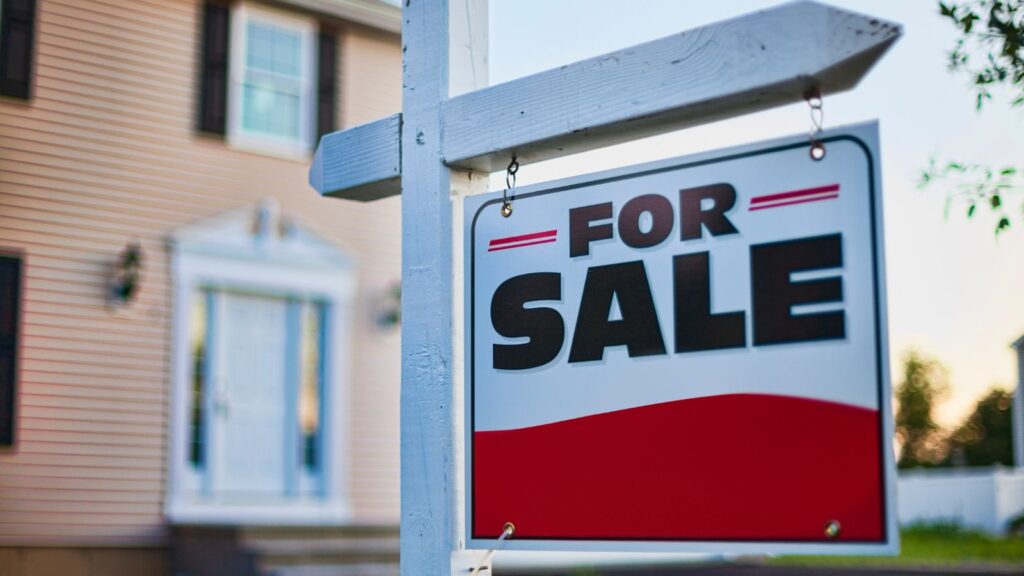Selling a home is a significant milestone that combines emotional transitions with practical decision-making. Whether you’re downsizing, relocating, or seeking a fresh start, understanding the process can make the experience smoother and more rewarding. By familiarizing yourself with each stage, you can set realistic goals and achieve the best outcome for your property. This guide walks you through the key steps to successfully sell your home while ensuring you remain in control throughout the journey.

Preparing Your Home for the Market
Getting your home ready for the market begins with creating a space that appeals to a broad range of buyers. Start by deep cleaning every corner, from baseboards to light fixtures. A spotless home feels welcoming and gives buyers the impression it’s been well cared for. Decluttering is equally important—remove personal items like family photos and store excess furniture to make rooms feel larger. Buyers need to imagine themselves living in the space, which is easier in a neutral, uncluttered environment.
The next step is to address minor repairs. Fix anything that’s broken, such as leaky faucets, squeaky doors, or chipped paint. Consider updates that provide a strong return on investment, such as repainting in neutral tones or replacing outdated lighting fixtures. Small improvements can have a big impact on your home’s appeal.
Don’t overlook curb appeal, as it’s the first impression potential buyers will have. Tidy up landscaping, trim bushes, and mow the lawn. Adding fresh mulch or seasonal flowers can brighten the space. Make sure the exterior, including the front door and porch, is clean and inviting.
Finally, staging can enhance your home’s appeal. Arrange furniture to showcase the flow of space, add light, and create a welcoming atmosphere. Thoughtful touches, like fresh flowers or modern accents, help potential buyers feel at home. These efforts prepare your home for a successful sale, attracting interest from the moment it hits the market.
Setting the Right Price
Choosing the right price for your home is critical to attracting buyers and maximizing your return. Pricing too high can deter interest, while pricing too low may leave money on the table. Start by researching comparable properties, often referred to as “comps,” in your neighborhood. These are homes with similar sizes, features, and locations that have recently sold. Pay attention to their sale prices and how long they were on the market.
A comparative market analysis (CMA) from a real estate professional can provide a detailed evaluation of your home’s value. This analysis considers local market trends, recent sales, and your property’s unique characteristics. Additionally, an independent appraisal offers an unbiased assessment of your home’s worth. Both tools can help you set a competitive price.
It’s also important to stay informed about market conditions. In a seller’s market, where demand outpaces supply, you may have more flexibility to price higher. Conversely, in a buyer’s market, competitive pricing becomes even more crucial to stand out.
Avoid letting emotional attachment influence your pricing strategy. While you may hold sentimental value for your home, buyers focus solely on its market value and condition. A well-priced home attracts more interest, which can lead to multiple offers and potentially drive up the final sale price.
Be prepared to adjust the price if needed. If your home isn’t receiving attention after a reasonable time on the market, reassess your pricing strategy. Setting the right price from the beginning increases your chances of a quick and successful sale, ensuring you meet your financial goals while appealing to serious buyers.
Marketing to Attract Buyers
Effective marketing is key to ensuring your home reaches the right audience. Today’s buyers typically begin their search online, making digital marketing strategies essential. Start with professional photography to capture your home in the best light. Clear, well-lit images of each room and exterior shots help your property stand out. Including a virtual tour or video walkthrough provides an immersive experience for remote buyers.
Your property description plays a significant role in sparking interest. Highlight your home’s unique features, such as updated appliances, outdoor spaces, or proximity to local amenities. Use engaging language to appeal to buyers emotionally while including factual details like square footage and the number of bedrooms and bathrooms.
In addition to online listings, promote your home using social media platforms. Sharing posts with compelling visuals and targeted ads can expand your reach to potential buyers. Traditional methods like “For Sale” signs, postcards, and local newspaper ads remain effective, especially for attracting nearby prospects.
Open houses are another valuable tool in your marketing strategy. They allow buyers to experience your home in person and envision living there. Promote open houses widely to maximize attendance.
A multi-faceted marketing plan that combines modern digital tools with time-tested techniques ensures your home gains the exposure needed to attract serious buyers. By presenting your home professionally and reaching the right audience, you increase the likelihood of receiving competitive offers.
Showcasing Your Home
Once your home is on the market, it is essential to keep it ready for showings. Potential buyers may schedule visits at short notice, so maintaining a clean and organized space is key. Make a habit of tidying up daily, focusing on details like clean countertops, dust-free surfaces, and neatly arranged furniture.
Pay attention to creating a welcoming atmosphere during showings. Open curtains or blinds to let in natural light, which makes rooms feel bright and inviting. Turn on lights in darker areas and consider soft background music to enhance the ambiance. Fresh flowers, lightly scented candles, or baked goods can add a warm, homey touch.
Neutral décor helps appeal to a wider audience. Avoid overly personalized styles or bold colors that may distract buyers. Highlight each room’s functionality—use a desk and chair to showcase a home office or set the dining table to emphasize entertaining potential.
During showings, step out to allow buyers to explore the property freely. This gives them the opportunity to envision themselves living in the space without feeling rushed or observed.
Feedback from showings is a valuable tool. If multiple buyers comment on specific concerns, consider addressing those areas to improve your home’s appeal. Keeping your home presentable and welcoming ensures a positive impression that resonates with buyers, increasing the likelihood of offers.
Negotiating Offers
Receiving an offer is an exciting milestone, but careful evaluation is essential before accepting. Review all aspects of the offer, including the proposed price, contingencies, financing details, and closing timeline. A high price may be less attractive if the buyer includes numerous contingencies or has uncertain financing.
Your real estate agent can help you assess the offer’s strengths and weaknesses. Together, you can determine whether to accept, reject, or counter. A counteroffer allows you to propose changes, such as adjusting the price or modifying the timeline. Be prepared for negotiations to involve some back-and-forth discussion.
Maintain a professional and open mindset during negotiations. While it’s natural to feel attached to your home, viewing the process as a business transaction helps you stay focused on your goals. Flexibility is also important—buyers may request concessions, such as covering closing costs or addressing repairs. Balancing your financial objectives with reasonable compromises can lead to a successful agreement.
Once terms are agreed upon, the buyer typically schedules inspections and finalizes financing. During this period, stay engaged to address any questions or concerns that arise. Successful negotiation sets the foundation for a smooth closing and ensures all parties are satisfied with the outcome.
Closing the Sale
The closing process finalizes the transfer of your property to the buyer. It begins with the buyer’s final walkthrough, ensuring the home is in the expected condition. During this time, resolve any last-minute issues, such as minor repairs or cleaning tasks.
Closing involves signing legal documents, including the deed, settlement statement, and loan paperwork. Review these documents thoroughly before the meeting, either on your own or with your agent or attorney. Being well-informed reduces the likelihood of surprises during the process.
Closing costs, which include agent commissions, title fees, and taxes, are typically deducted from your proceeds. To avoid misunderstandings, make sure you understand these expenses ahead of time. Once all documents are signed and payments are processed, the buyer’s funds are transferred, and ownership officially changes hands.
Celebrate this moment—it marks the end of your selling journey and the start of a new chapter. With careful preparation and attention to detail, you’ve successfully navigated the home-selling process, achieving your goals and paving the way for future opportunities.
Ready to Sell? Let's Make It Happen
Selling your home involves careful planning and informed decisions at every step. By understanding the process and working with a professional, you can achieve a smooth, successful sale. If you’re ready to take the next step in selling your property, contact us today to discuss how we can assist you in reaching your goals.

